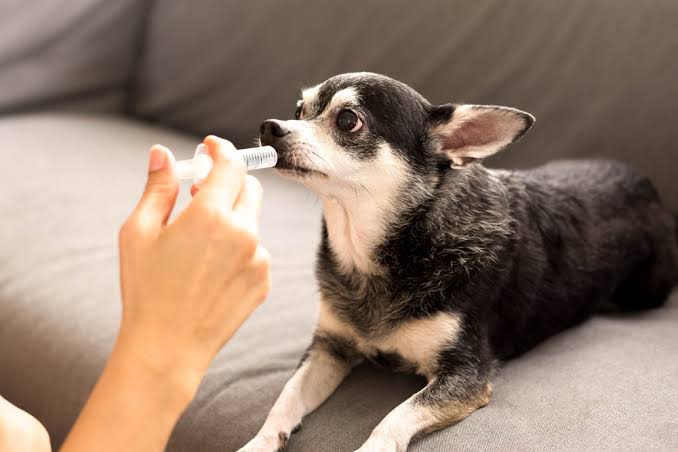
Cephalexin is a commonly prescribed antibiotic used to treat a wide range of bacterial infections in dogs. As a first-generation cephalosporin, it works effectively against gram-positive and some gram-negative bacteria, making it a versatile option for veterinarians.

This article provides a detailed exploration of how cephalexin helps treat infections in dogs, its uses, benefits, potential side effects, and answers to frequently asked questions.
What is Cephalexin?
Cephalexin is an antibiotic in the cephalosporin family. It is effective against various bacterial infections by interfering with the bacteria’s ability to form a protective cell wall. Without this wall, bacteria cannot survive, ultimately halting the infection.
Cephalexin is available in multiple forms, including tablets, capsules, chewables, and liquid suspensions, making it easier to administer to dogs of all sizes and temperaments.
How Does Cephalexin Work?
Cephalexin is bactericidal, meaning it kills bacteria rather than merely stopping their growth. It works by:
- Targeting Cell Wall Synthesis:
Cephalexin inhibits the bacteria’s ability to produce peptidoglycan, a key component of their cell walls. Without a functional cell wall, bacteria become vulnerable and eventually die. - Broad-Spectrum Activity:
Cephalexin is effective against many types of bacteria, particularly gram-positive ones like Staphylococcus and Streptococcus. It also works against some gram-negative bacteria, such as E. coli and Proteus mirabilis.
This dual action makes it a go-to choice for a variety of infections in dogs.
What Types of Infections Does Cephalexin Treat?
Veterinarians commonly prescribe cephalexin for the following infections:
- Skin Infections (Pyoderma):
Cephalexin is widely used to treat skin infections caused by Staphylococcus bacteria, which often result in redness, swelling, itching, or pustules. - Urinary Tract Infections (UTIs):
It is effective against bacterial infections of the urinary tract, alleviating symptoms like frequent urination, discomfort, and blood in urine. - Respiratory Infections:
Cephalexin is used to treat respiratory infections such as bronchitis or pneumonia caused by susceptible bacteria. - Wound Infections:
For wounds or surgical sites at risk of infection, cephalexin is prescribed to prevent bacterial growth and aid in recovery. - Bone Infections (Osteomyelitis):
Cephalexin may be used to manage infections in bones and joints, though more severe cases might require additional treatment. - Ear Infections (Otitis Externa):
When ear infections are caused by bacteria susceptible to cephalexin, the antibiotic helps reduce inflammation and infection.
Benefits of Cephalexin for Dogs
- Effective Against a Wide Range of Bacteria:
Cephalexin’s broad-spectrum activity makes it versatile for various types of infections. - Well-Tolerated:
Most dogs tolerate cephalexin well, making it a reliable choice for long-term treatment when needed. - Affordable and Accessible:
Cephalexin is widely available and relatively inexpensive compared to other antibiotics. - Multiple Forms:
Cephalexin is available in multiple dosage forms, including tablets, capsules, and liquid, which helps ensure ease of administration. - Fast-Acting:
Many dogs show signs of improvement within a few days of starting cephalexin, though it’s important to complete the full course of treatment to avoid bacterial resistance.
How is Cephalexin Administered to Dogs?
Dosage
- The typical dosage of cephalexin for dogs is 10-15 mg per pound (22-33 mg/kg) of body weight, given every 8 to 12 hours.
- Dosage and frequency may vary depending on the severity of the infection and the veterinarian’s recommendation.
Duration
- Cephalexin is generally prescribed for 7-14 days or until the infection is fully resolved.
- It’s crucial to complete the entire course, even if symptoms improve, to prevent bacterial resistance.
Administration Tips
- Cephalexin can be given with or without food, but administering it with food may reduce the risk of gastrointestinal upset.
- Liquid forms should be measured carefully, and capsules or tablets should be given whole unless instructed otherwise.
READ ALSO: Pain Medicine for Dogs: Understanding Options, Safety, and Best Practices
Potential Side Effects of Cephalexin
Although cephalexin is generally safe for dogs, it may cause side effects in some cases. Common side effects include:
- Gastrointestinal Upset:
- Vomiting, diarrhea, or decreased appetite.
- Administering with food can help mitigate these effects.
- Allergic Reactions:
- Symptoms include itching, swelling, difficulty breathing, or hives.
- Seek immediate veterinary attention if an allergic reaction occurs.
- Lethargy:
- Some dogs may feel tired or sluggish during treatment.
- Rare Side Effects:
- Blood disorders, kidney issues, or seizures in dogs with underlying health problems or overdosage.
If side effects persist or worsen, consult your veterinarian immediately.
Precautions and Warnings
- Allergies to Cephalosporins or Penicillins:
Dogs allergic to cephalexin or related antibiotics should not take this medication. - Underlying Conditions:
Use caution in dogs with kidney disease, liver problems, or a history of seizures. - Drug Interactions:
Cephalexin may interact with other medications, such as aminoglycosides or diuretics. Inform your veterinarian about any medications your dog is taking. - Pregnant or Nursing Dogs:
Cephalexin is generally considered safe, but it should only be used under veterinary supervision.
FAQs
Is cephalexin safe for all dogs?
Yes, cephalexin is safe for most dogs when prescribed by a veterinarian. However, dogs with allergies to cephalosporins, kidney disease, or other health issues may require alternative treatments.
How quickly does cephalexin work in dogs?
Most dogs show improvement within 48-72 hours. However, it’s important to complete the full course of antibiotics to ensure the infection is fully treated.
Can I stop giving cephalexin if my dog seems better?
No. Stopping cephalexin prematurely can lead to incomplete treatment and antibiotic resistance. Always complete the prescribed course.
What should I do if I miss a dose?
If you miss a dose, give it as soon as you remember. If it’s close to the next scheduled dose, skip the missed dose and continue as normal. Do not double the dose.
Can cephalexin treat fungal or viral infections?
No. Cephalexin is only effective against bacterial infections and cannot treat fungal or viral infections.
Is cephalexin safe for puppies?
Yes, cephalexin can be prescribed for puppies, but the dosage must be carefully calculated based on their weight and age.
Can humans use cephalexin prescribed for dogs?
While cephalexin is also used in human medicine, you should never use medications prescribed for pets. Always consult a doctor for human treatments.
Can cephalexin cause antibiotic resistance?
Yes, improper use of cephalexin, such as stopping the course early or overuse, can contribute to antibiotic resistance. Follow your veterinarian’s instructions carefully.
What should I do if my dog overdoses on cephalexin?
Contact your veterinarian or an emergency animal clinic immediately. Overdoses may cause severe vomiting, diarrhea, seizures, or kidney damage.
Can cephalexin be used long-term?
In some cases, cephalexin may be prescribed for chronic infections. Long-term use should always be monitored by a veterinarian to avoid complications.
Leave a Reply
You must be logged in to post a comment.